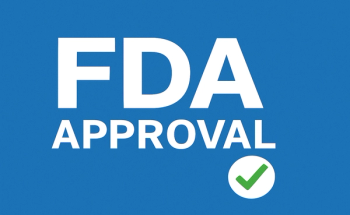
Impact of Osteoporotic Fractures on Health-Related Quality-of-Life Measures
Background
Osteoporosis is a disease characterized by microarchitectural deterioration and bone loss, resulting in bone fragility. The primary clinical consequence of osteoporosis is fragility fracture, which in serious cases can result in severe pain, disability, and even death. The burden of osteoporosis affects both patients and society; in 2010, the economic burden of osteoporosis in the European Union was estimated at €37 billion and, in the United States in 2008, it was estimated at $22 billion.1
Health state utility values (HSUVs) are generic health-related quality-of-life (HRQoL) measures providing quantifiable data that can be used to describe the burden of a disease and facilitate rational decision making for resource allocation. Reimbursement authorities in Canada, New Zealand, and some European nations recommend using HSUVs as a means to evaluate the economic impact of a disease.1
A meta-analysis identified 62 studies that reported HSUV data after fractures to the hip, vertebrae, or distal forearm. Although the studies were methodologically diverse, only a few enabled estimation of the consequences of fracture on HRQoL, and they lacked large patient populations and were limited by short follow-up periods. Moreover, these studies generally enrolled patients with a single fracture type and were conducted in 1 country. Thus, a multinational study that recruited patients with recent fractures at different sites and had a longer follow-up period would advance the understanding of the consequences of fragility fracture. Results from such a study may be beneficial in identifying patients at risk for detrimental outcomes after fracture and those meriting specific interventions, and may potentially facilitate more accurate prognoses after fracture.1
The International Costs and Utilities Related to Osteoporotic fractures Study (ICUROS) was launched in 2007 with the goal of assessing HRQoL measures and costs associated with osteoporotic fractures. As of 2017, 11 countries (Australia, Austria, Estonia, France, Italy,
Lithuania, Mexico, Russia, Spain, the United Kingdom, and the United States) had participated in the study.1
This study used data from ICUROS to estimate HRQoL consequences for patients with hip, vertebral, or distal forearm fracture (pooled from all participating countries) and to explore determinants of accumulated HRQoL loss by fracture type.1
Study Design
The ICUROS was a prospective observational study that utilized data extracted from its database to examine the consequences of osteoporotic fracture in adult patients (≥50 years of age) without comorbid conditions. Eligible patients included those who had a hip, vertebral, or distal forearm fracture and completed a study interview within 2 weeks after the first healthcare contact for fracture; patients who experienced a subsequent fracture during the study period were excluded from analysis.1
Eligible participants were interviewed at 4 time points (within 2 weeks after fracture, [including recall of prefracture HRQoL] and at months 4, 12, and 18), yielding 5 HRQoL scores. The EQ-5D 3-level descriptive system (EQ-5-3L), a generic HRQoL instrument, was translated to HSUVs to generate HRQoL data. The EQ-5D-3L is applicable to a wide range of health conditions while providing a robust health profile using a patient-administered questionnaire that describes health in 5 dimensions: mobility, self-care, usual activities, pain/discomfort, and anxiety/depression.1
A complete case (CC) approach was applied in the primary analysis, excluding patients who sustained a new fracture during follow-up, and those with incomplete EQ-5-3L data for all follow-up time points or who were lost to follow-up. Two other approaches were used to assess the impact of patients lost to follow-up: available case (AC) analysis (all eligible patients with available data at certain time points were included) and multiple imputation (MI; based on a model, multiple imputations are made for each missing value).1
Results
A total of 3021 patients comprised the CC cohort (hip fracture, n = 1415; vertebral fracture, n = 559; distal forearm fracture, n = 1047) out of a total of 5456 enrolled patients. The proportions of women were fairly similar across the fracture subtypes (80%, 83%, and 89%, respectively). Patients with hip fractures were generally older than patients with vertebral fracture or distal forearm fracture (mean ages of 76, 70, and 67 years, respectively).1
All 3 fracture types were associated with substantial HRQoL loss directly after fracture (within 2 weeks after fracture). The mean differences between HSUVs prior to fracture and at the first interview for hip, vertebral, and distal forearm fractures were estimated at 0.89, 0.67, and 0.48, respectively.1
HRQoL was shown to improve with time. After 18 months, mean HSUVs were lower than before the fracture in patients with hip (0.66 vs 0.77; P <.001) and vertebral (0.70 vs 0.83; P <.001) fractures (
The largest accumulated HRQoL loss over 18 months was observed among patients with hip fractures (0.42 quality-adjusted life-years [QALYs]), followed by vertebral fractures (0.34 QALYs) and distal forearm fractures (0.16 QALYs). Analyses of the data using the 2 other approaches, AC and MI, provided HSUVs point estimates that were similar to those obtained by the CC approach.1
Implications
To date, the ICUROS is the largest study of HRQoL consequences of osteoporotic fracture; it included a study population of more than 3000 patients. The analysis showed that all 3 fracture types that were investigated resulted in substantial and immediate loss in HRQoL. Additionally, for patients with hip or vertebral fractures, HRQoL was markedly impaired for at least 18 months.1
The ICUROS study was limited by a variety of different variables. First, patients were asked to draw on memory to estimate HSUV prior to fracture, potentially resulting in systematically under- or overestimated health prior to fracture and skewing results. Additionally, ICUROS did not capture data on HSUV between the fracture and 4 months after the fracture, a period in which it was assumed that HRQoL increased linearly. If HRQoL improved more rapidly during the first months after fracture, the impact of the fracture on HRQoL during this time may have been overestimated.1
The authors noted that additional research is needed, and studies that estimate HSUVs using other value sets and methodologies (eg, time trade-off or standard gamble) would be valuable to assess the economic burden of osteoporotic fractures. Studies of longer duration and those with more frequent follow-up would provide additional insight on the consequences of these fractures.1
Reference
1. Svedbom A, Borgstöm F, Hernlund E, et al. Quality of life for up to 18 months after low-energy hip, vertebral, and distal forearm fractures—results from the ICUROS. Osteoporos Int. 2018;29(3):557-566. doi: 10.1007/s00198-017-4317-4.
Newsletter
Stay ahead of policy, cost, and value—subscribe to AJMC for expert insights at the intersection of clinical care and health economics.












































